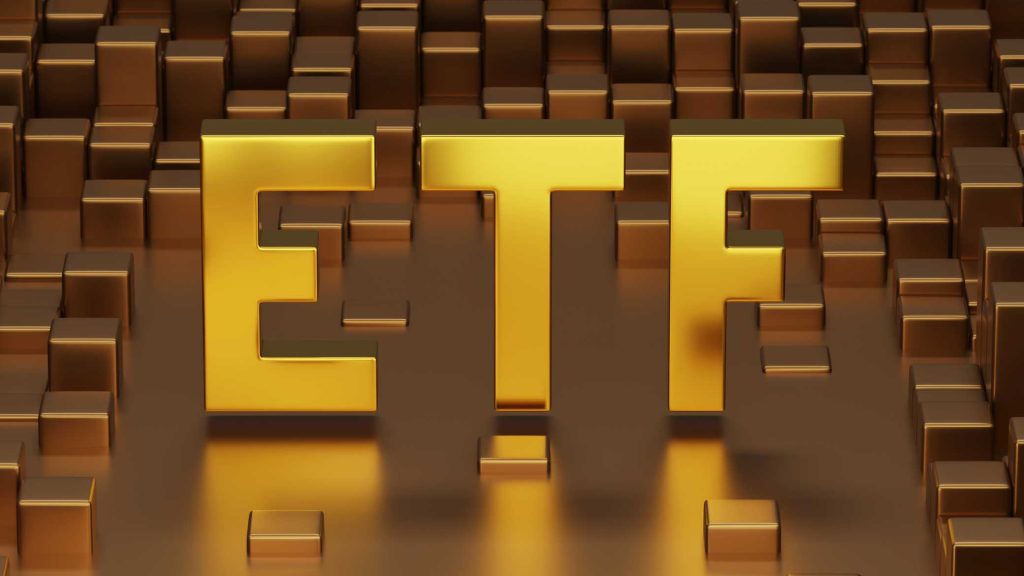Invest in Gold : No More Gold Bonds? Invest in Gold ETF : Comprehensive Guide 2024
Invest in Gold : Gold has historically been one of the most trusted and reliable investments, particularly in times of economic uncertainty. Known as a “safe-haven” asset, gold is seen as a hedge against inflation and economic instability. Recent years have seen a significant increase in gold prices, driven by prolonged geopolitical conflicts, rising inflation, and changes in global financial dynamics. This upward trend has rekindled investor interest in gold, making it a sought-after asset once again.
Table of Contents
In India, the central government introduced Sovereign Gold Bonds (SGBs) to encourage people to invest in gold without physically holding it. However, due to rising gold prices, the government has recently stopped issuing these bonds. This move has pushed investors to explore alternative ways of investing in gold, primarily through Gold Exchange Traded Funds (ETFs). In this essay, we will examine the reasons behind the government’s decision to halt gold bond issuances, delve into the rise of gold ETFs as an alternative, and evaluate the benefits of incorporating gold into an investment portfolio.
The Rise and Halt of Sovereign Gold Bonds (SGBs)

The Indian government introduced the Sovereign Gold Bond scheme as part of a larger effort to curb the import of physical gold. Physical gold purchases have historically placed a significant strain on India’s import bill, as the country has limited domestic gold reserves and relies on imports to meet demand. High gold imports also impact the current account deficit and put pressure on the country’s foreign exchange reserves.
Also Read : Mutual Fund Investment – 70% Return in Last 1 Year | ETF Fund
To address this issue, the Sovereign Gold Bond scheme was launched in 2015 by the Reserve Bank of India (RBI) on behalf of the government. The primary goal was to provide investors with a convenient alternative to physical gold while reducing gold imports. These bonds offered an attractive 2.5% interest rate per annum along with capital appreciation linked to gold’s market price. They also came with tax exemptions on capital gains if held until maturity, making them an appealing option for many Indian investors.
In 2023, the government issued gold bonds four times, raising around ₹2,919 crore through the scheme. This success underscored investors’ enthusiasm for a structured, government-backed investment in gold. However, in 2024, only one gold bond issuance took place. Amidst rising gold prices, the government announced the redemption of five-year gold bonds issued in earlier phases, effectively putting the scheme on hold.
Reasons for Halting Gold Bond Issuances
Several factors contributed to the government’s decision to temporarily suspend gold bond issuances in 2024:
- Rising Gold Prices: With global gold prices surging, the government faced a potential liability. As bond prices are pegged to the value of gold, a significant increase in prices could lead to substantial payouts when bonds mature. This would, in turn, strain public finances.
- Managing Import Bills: The bond program was intended to reduce physical gold purchases. However, with surging prices, investors may hold on to their bonds instead of redeeming them. This lack of turnover could inadvertently increase demand for physical gold, counteracting the program’s original goal.
- Geopolitical Tensions: Global conflicts, such as the ongoing Russia-Ukraine war and tensions in the Middle East, have fueled demand for gold as a safe asset. Central banks worldwide are also increasing their gold reserves, driving up prices further. These dynamics add to the government’s challenge in maintaining the bond program.
- Budgetary Constraints: The government’s decision may also reflect budgetary constraints and a desire to avoid added liabilities in uncertain economic times.
Given these factors, investors are now turning to Gold ETFs as a viable alternative to sovereign gold bonds.
Gold ETFs: A Modern Solution to Investing in Gold
With the halting of gold bond issuances, Gold Exchange Traded Funds (ETFs) have gained popularity among Indian investors as an alternative way to gain exposure to gold. Gold ETFs are investment funds listed on stock exchanges that aim to track the price of gold. Unlike physical gold, which requires storage and security, gold ETFs offer investors a convenient and liquid way to hold gold as a financial asset.
What is a Gold ETF?

A Gold ETF is an exchange-traded fund that primarily invests in physical gold. Each unit of a gold ETF represents a specific amount of gold, typically one gram or half a gram. As the price of gold fluctuates, so does the price of the ETF units. Investors can buy and sell these units on the stock exchange, making gold ETFs a convenient and flexible investment option.
Gold ETFs in India have seen a significant rise in investments. In the 2024 financial year alone, over ₹5,339 crores were invested in gold ETFs, and by January 2024, total investments reached around ₹7,367 crores. The surge in interest in gold ETFs reflects the growing recognition of gold as a valuable asset and an effective hedge against inflation and market volatility.
Advantages of Gold ETFs Over Physical Gold and Gold Bonds
- Liquidity: Gold ETFs are traded on stock exchanges, making them highly liquid. Investors can buy or sell their units at any time during trading hours, allowing them to respond to market fluctuations promptly.
- Storage and Security: Unlike physical gold, which requires storage and security arrangements, gold ETFs do not have such challenges. The gold backing the ETFs is securely held by the fund provider, offering peace of mind to investors.
- No Premiums or Making Charges: Physical gold often involves additional costs such as making charges and premium pricing. Gold ETFs, however, are free from these expenses, allowing investors to purchase gold at market value.
- Low Investment Threshold: Investors can buy gold ETFs in small quantities, making them accessible to individuals with modest investment budgets. Unlike gold bonds, which may have a minimum purchase requirement, gold ETFs offer greater flexibility in terms of investment size.
- Transparency: Gold ETFs provide transparent pricing as they are linked directly to the price of gold on the open market. Investors can track prices in real-time, making it easier to manage their investments.
- Portfolio Diversification: Gold ETFs are an effective way to diversify an investment portfolio. Because gold prices tend to move inversely to stock prices, gold ETFs can act as a hedge, balancing portfolio performance during market downturns.
How to Invest in Gold ETFs
Investing in gold ETFs is a straightforward process. Here’s a step-by-step guide for beginners:
- Open a Demat and Trading Account: To invest in gold ETFs, you need a Demat account and a trading account with a brokerage firm. These accounts allow you to buy and hold ETF units electronically.
- Select a Gold ETF: Multiple gold ETFs are available in the market, each managed by different fund houses. Compare their performance, management fees, and liquidity before choosing one.
- Place an Order: Once you’ve selected a gold ETF, you can place a buy order through your brokerage account. Specify the number of units you wish to purchase and the price at which you’re willing to buy.
- Monitor Your Investment: After purchasing, monitor your ETF investment periodically. Gold ETFs track the market price of gold, so your investment’s value will fluctuate with gold prices.
- Redeem When Needed: When you wish to cash out, you can sell your ETF units on the exchange. The proceeds from the sale will be credited to your account, minus any brokerage fees.
Why Invest in Gold? The Case for Gold as a Defensive Asset
Gold’s appeal as an investment lies in its ability to retain value during economic downturns. Unlike stocks and bonds, gold tends to perform well when other assets falter, making it an excellent hedge against market volatility. The following factors explain why gold is a prudent addition to an investment portfolio:
- Inflation Hedge: Gold’s value rises in inflationary periods as it is seen as a store of value. When the purchasing power of currency declines, gold typically maintains or increases in value, protecting investors from the effects of inflation.
- Portfolio Diversification: Investing in different asset classes is essential for reducing portfolio risk. Gold’s negative correlation with stocks and bonds means it can offset losses in other investments, balancing overall returns.
- Geopolitical Uncertainty: During times of geopolitical crisis, investors flock to safe-haven assets like gold. Recent events, including the Covid-19 pandemic and global conflicts, have shown that gold prices surge during uncertain times.
- Central Bank Demand: Central banks worldwide hold significant gold reserves, underpinning its value on the global stage. This demand provides stability and makes gold a reliable long-term investment.
- Historical Performance: Gold has outperformed many other asset classes over long timeframes. By looking at gold’s historical performance, investors can appreciate its ability to preserve wealth over generations.
Recommended Gold Allocation in a Portfolio
Investment experts typically recommend that individuals allocate a portion of their portfolio to gold, usually around 5% to 10%. This allocation ensures that gold acts as a safeguard during market downturns without overly impacting returns during growth periods.
Invest in Gold – Conclusion:

With the suspension of new gold bond issuances, investors are increasingly turning to Gold ETFs as a viable and convenient alternative. While gold bonds offered a unique combination of interest income and capital appreciation, gold ETFs provide flexibility, liquidity, and accessibility, allowing investors to buy and sell gold with ease. The demand for gold is likely to remain strong as global economic uncertainty persists, making it an essential part of a diversified portfolio.
Buy Now : Beginner to Advanced Option Trading Strategy
As we look to the future, gold ETFs will play a significant role in shaping the investment landscape for gold. Whether for their defensive qualities, inflation hedging, or diversification benefits, gold ETFs offer a reliable way to gain exposure to this precious metal. For investors seeking stability amidst economic fluctuations, gold remains a trusted asset—and gold ETFs provide an efficient way to own it.
Disclaimer:
This article is for informational purposes only and should not be considered as financial or investment advice. The information provided is based on general market trends and analysis, and individual investment needs may vary. Please consult with a certified financial advisor or conduct thorough research before making any investment decisions. Investing in gold, ETFs, and other financial assets involves risk, and past performance is not indicative of future results. The author and publisher are not responsible for any financial losses that may arise from following the information provided in this article.
Keywords : Invest in Gold – Invest in Gold 2024 – Invest in Gold 2025



